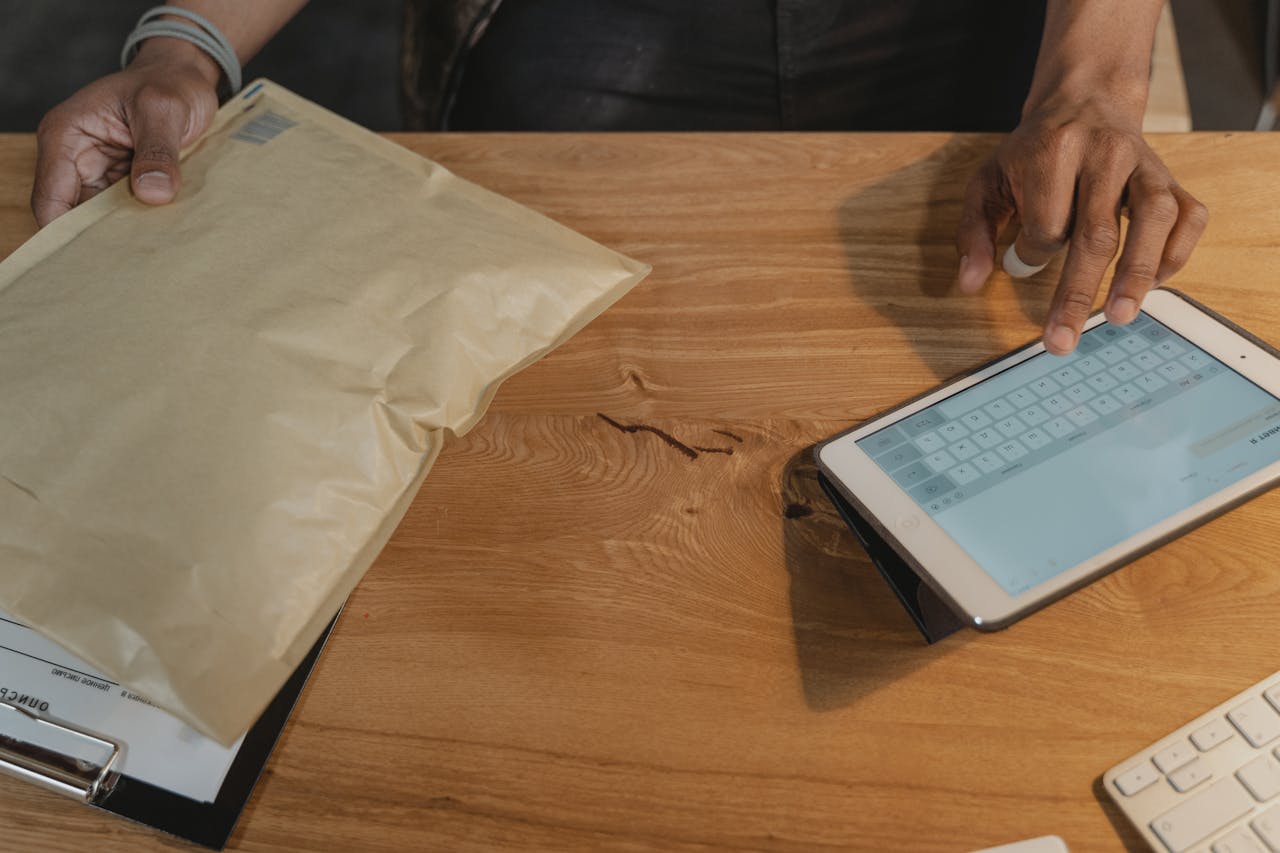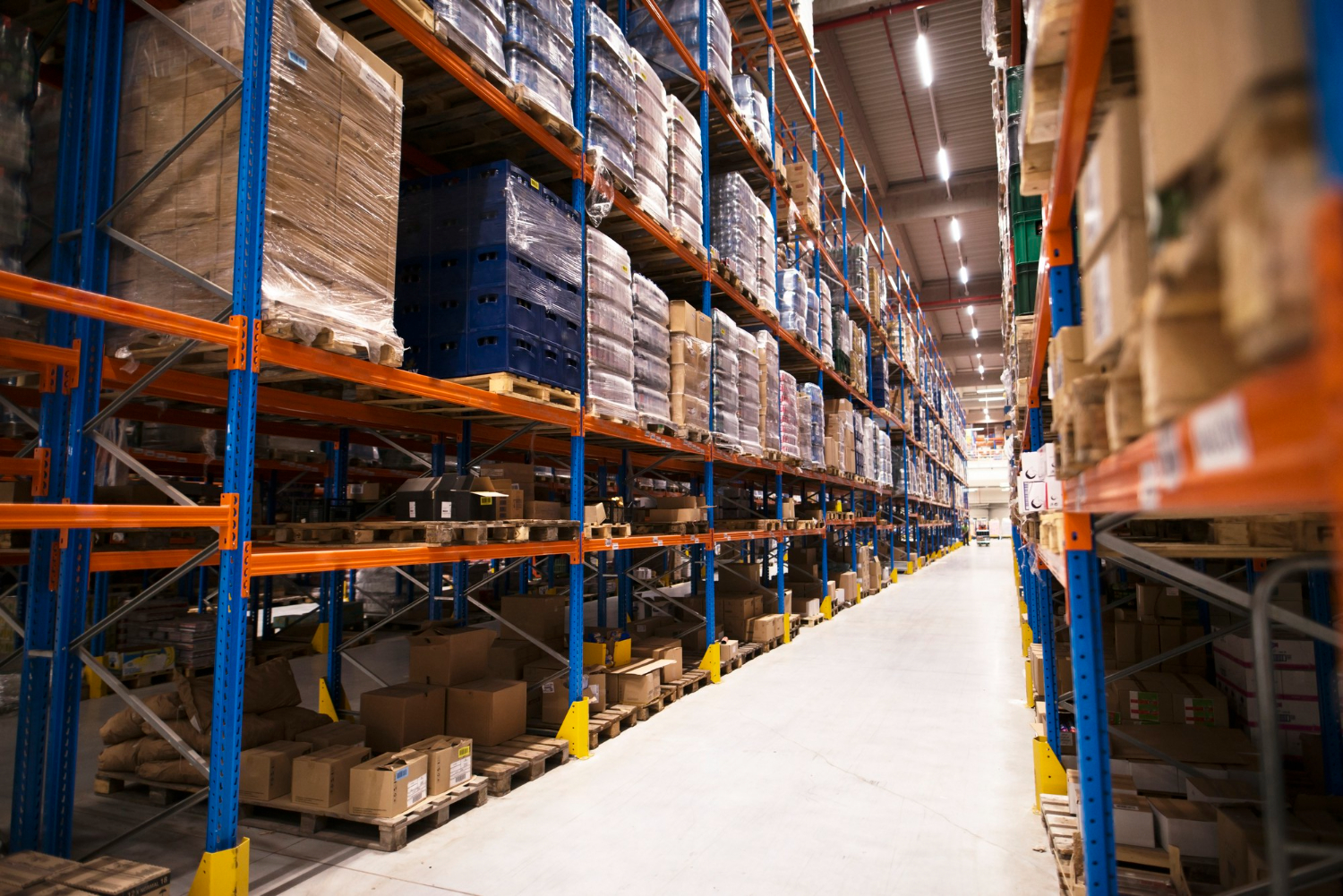As selling moves beyond just a website, into stores, Instagram shops, marketplaces, and wholesale deals, it’s easy for things to get messy fast. Managing each channel on its own can lead to a lot of extra work, mixed-up orders, and a not-so-great customer experience.
That’s where omnichannel fulfillment comes in. It ties all your sales channels together into one smooth system, so your customers get the same reliable experience whether they’re buying from your site, a store shelf, or a TikTok link. It also saves you time and headaches behind the scenes by syncing everything up.
In this article, we’ll break down what omnichannel fulfillment actually is, why it matters, and how it can help you run a more efficient, scalable business.
What Is Omnichannel Fulfilment?
Omnichannel fulfillment is all about syncing up your entire order and inventory system, so whether someone buys from your website, a physical store, a mobile app, or even through social media, it’s all handled in one place. Instead of juggling separate systems for each sales channel, everything connects in the background to make things smoother and faster.
This setup makes it easier to manage things like packing, shipping, returns, and restocking without missing a beat. And more importantly, it gives your customers a seamless experience. They can shop however they want, online, in-store, or both, and get the same reliable service every time.
At the end of the day, it’s about giving people more flexibility and convenience while making your operations more efficient behind the scenes.
Differences Between Multiple Channels and Unified Channel Fulfilment
When you're selling through different platforms, like an online store, a physical shop, and social media, you have two main ways to manage it: either treat each channel separately or bring everything together under one system.
With multiple independent channels, each platform runs on its own. Inventory is tracked separately, orders are processed in different systems, and customers might notice a shift in their experience depending on where they shop. There’s little to no data sharing between platforms, so insights stay siloed. This approach often focuses more on reaching as many customers as possible, but it can get messy and inefficient behind the scenes.
Now compare that with a unified channel approach. Here, everything is synced: inventory updates in real time across all platforms, orders are handled from one central system, and your customers get a consistent experience no matter where they shop. Whether someone starts browsing on your Instagram page and checks out through your website, or buys in-store and requests an online return, the process feels smooth and connected. This method puts customer convenience at the center and helps build trust and loyalty.
In short, the unified model not only simplifies your backend operations but also gives your customers a seamless experience that feels thoughtful and reliable.
How Omnichannel Order Fulfilment Works

1. Diverse Sales Platforms
From your website and Instagram shop to marketplaces like Jumia or your physical storefront, your products are available across different platforms. But what matters most is consistency, same branding, same info, same feel, so no matter where someone shops, it all feels like “you.
2. Unified Stock Control
Instead of juggling separate inventory lists for each channel, you use a centralized system that updates stock levels in real time. Whether a product is in your warehouse, backroom, or retail shelf, everything is tracked in one place, helping you avoid overselling or disappointing a customer with an “out of stock” surprise.
3. Centralized Order Handling
No matter where an order comes from, your online store, Facebook page, or walk-in customer, it’s processed through a single order management system. This helps you fulfill faster, avoid errors, and keep everything organized behind the scenes.
4. Flexible Delivery Methods
Whether someone wants their order shipped to their home, picked up in-store, or delivered through a local rider service, your system helps figure out what’s possible and what’s fastest based on location and stock. The result? Happier customers and smoother deliveries.
5. Consistent Customer Experience
Pricing, offers, and product info are aligned across all your channels. After the sale, customers get timely updates on their order status. If they need to return or exchange something, the process is the same regardless of where they bought it. That consistency builds trust.
6. Data-Driven Decision Making
Because all your sales and customer data come together in one place, you can actually see what’s working. What’s selling well? Which channel brings in the most loyal buyers? These insights help you adjust stock, improve service, and fine-tune your marketing.
Real-Life Omnichannel Fulfillment Illustration
Let’s say you’re scrolling through social media and come across a product you like. You decide to buy it, but instead of waiting days for delivery, you choose the “buy online, pick up in store” option to skip the shipping costs and get it the same day.
Behind the scenes, the retailer’s system kicks in right away. It updates the inventory to reflect your order and notifies the store where you’ll be picking it up. A store employee preps your package, and once it’s ready, you get a confirmation email.
When you head to the store, pickup is quick and hassle-free. And while you’re there, you might take a look around, and end up grabbing a few more things. You’re not alone. Almost half of shoppers end up buying extra items during in-store pickups. That means more convenience for you, and more sales for the store.
This whole process connects your online discovery with an easy in-person experience. It’s a great example of how combining digital and physical shopping can make the whole process smoother, more enjoyable, and even more profitable.
Key elements include:
- You find the product online
- The system updates inventory and alerts the store
- Your order gets prepped for easy pickup
- You grab it in person, and maybe buy more
By mixing online browsing with in-store convenience, both shoppers and businesses get the best of both worlds.
Types of Omnichannel Fulfillment Approaches

There’s no one-size-fits-all when it comes to fulfillment. Depending on your setup and what your customers prefer, you can mix and match different methods to create a smoother, more flexible shopping experience. Here are eight common approaches businesses use:
1. Purchase Online, Collect In-Store
This one’s pretty straightforward, your customer places an order on your website and picks it up at a nearby store. It’s quick, saves on shipping, and gives them control over when they collect their item.
2. Fulfill Orders from Stores
Instead of fulfilling online orders from just one warehouse, you use your store locations like mini-distribution hubs. When an order comes in, it’s shipped from the closest store that has it in stock. This usually means faster delivery and lower shipping costs.
3. Deliver to Store for Pickup
Here, customers order online and choose a store where they’d like to collect their items. It’s ideal for people who prefer picking things up at a location that’s convenient, like near work or on their commute home.
4. Direct-to-Home Delivery
The classic option: an order gets packed and shipped to the customer’s doorstep from your warehouse or store. It’s all about maximum convenience, especially for people who don’t want to step outside.
5. Selling on External Marketplaces
You can also sell your products through big platforms like Amazon or eBay. This puts your products in front of more people, and as long as you keep fulfillment reliable and consistent, it’s a solid way to grow.
6. Mobile App Purchasing
If you’ve got a mobile app, great, let your customers shop right from there. It makes the buying process simple, especially for people who love scrolling and shopping from their phones.
7. Interactive Digital Stations
Incorporate kiosks or interactive website features that provide product info, personalized suggestions, and easy checkout options to enrich the buying journey.
8. Outsourcing Fulfillment to Specialists
If you’d rather not handle packing and shipping yourself, you can team up with third-party logistics providers (3PLs). They take care of the heavy lifting, so your team can focus on other parts of the business.
Omnichannel Fulfilment Best Practices
Want to meet customer expectations and keep your operations running smoothly? Start by using a centralized system that updates your inventory across all your sales channels in real time. That way, shoppers see exactly what’s in stock, no surprises or overselling.
Next, make sure your pricing, product info, and branding are consistent whether someone’s browsing your website or walking into your store. That kind of consistency builds trust and makes the experience feel seamless, no matter how they shop.
Offer flexible delivery and pickup options, like buy online, pick up in-store (BOPIS), next-day delivery, or standard shipping. Giving customers a choice makes it easier for them to shop on their own terms.
It also helps to have a well-trained team. When everyone, from customer service to in-store staff, is on the same page, customers get clear, accurate help. That kind of reliability makes people feel more confident buying from you.
Leverage your customer data wisely. Personal touches like product recommendations or exclusive offers can turn a one-time buyer into a repeat customer. People notice when you remember what they like.
Behind the scenes, keep your supply chain running efficiently. That means keeping stock levels healthy and making sure orders move quickly through your system. The fewer delays, the happier your customers will be.
Don’t leave shoppers guessing, send regular updates on their order status and tracking. Clear communication cuts down on uncertainty and builds a better experience overall.
Track your key metrics, things like delivery speed, order accuracy, customer satisfaction, and how each channel is performing. Then use that data to find gaps and improve over time.
Lastly, make it easy for customers to share feedback and take their concerns seriously. The more you listen and adapt, the better your fulfillment process will be.
When all these pieces come together, you’re not just fulfilling orders; you’re building trust, loyalty, and a business that’s ready for whatever comes next.
Omnichannel Fulfillment Solutions
If managing orders from multiple sales channels feels overwhelming, you’re not alone. Many businesses turn to third-party logistics (3PL) providers who specialize in handling omnichannel fulfillment. These companies already have the infrastructure, like warehouses and shipping systems, in place to process and deliver orders efficiently. By outsourcing this part of your operations, you can simplify your supply chain without having to build it all yourself. To find a good provider, try asking a business advisor or searching online for “omnichannel fulfillment service” in your area.
How ShipwithMina Enhances Omnichannel Fulfillment

ShipwithMina is designed to strengthen your omnichannel operations with smart logistics that adapt as you grow. Here’s how modern fulfillment solutions supports that:
- Direct-from-China Supply Chains: A fulfillment setup that includes warehousing in China and direct shipping to your target markets helps streamline sourcing and speed up deliveries. This reduces delays and keeps inventory flowing.
- AI-Powered Pick & Pack: Using AI to plan picking routes and packing processes boosts order accuracy and processing speed. It’s not just faster, it’s smarter and more consistent, even during peak seasons.
- Proprietary Shipping Networks: Access to exclusive air and sea freight options, like chartered shipping lanes, can reduce delivery times and sidestep common bottlenecks. It also helps cut down on costs tied to unreliable carriers or last-minute logistics fixes.
- Global Fulfillment Coverage: Having warehouse hubs in key locations like China, the U.S., Europe, and Australia gives you flexibility. You can route orders more efficiently, cut delivery times, and meet customer expectations across different regions.
- Efficiency and Cost Control: When done right, tech-enabled fulfillment can increase output by up to 5× while reducing labor and operational costs by as much as 60%. It’s a win-win for scaling without burning through your budget.
Omnichannel Fulfillment Software
On the tech side, there are plenty of digital tools that help bring your online and offline operations together under one roof. Here’s a breakdown of how different software types can support your business:
1. Tools for Monitoring and Controlling Stock Levels
These help you stay on top of stock levels in real time, whether you're selling online, in-store, or both. That means fewer chances of overselling or running out of popular products. Some even help manage purchasing and production, so you can see your entire supply chain at a glance.
2. Systems for Handling and Streamlining Orders
These platforms collect orders from all your sales channels, like your website, marketplaces, and physical stores, and organize them in one place. They help with picking, packing, and shipping so that your customers get a smooth and consistent experience no matter where they shop.
3. Customer Data Tracking and Engagement Platforms
Think of this as your digital Rolodex, but smarter. These tools pull in customer info, update profiles automatically, and give your sales and support teams everything they need to deliver more personalized service.
4. Software for Insights and Performance Tracking
Need to know what’s working and what’s not? These tools give you the data, sales trends, customer behavior, and fulfillment performance, so you can make smarter decisions and keep improving.
5. Integrated Enterprise Management Suites
If you’re running a larger operation and need something more comprehensive, ERPs bring everything, finance, inventory, customer management, and more, into one centralized system. They’re a bigger investment but offer powerful control and visibility across your entire business.
Final Take
Omnichannel fulfillment isn’t just a buzzword; it’s quickly becoming the standard for businesses that want to grow while keeping customers happy. When your systems talk to each other, and your team knows what’s going on across every channel, everything runs more smoothly. Orders go out faster, stock stays accurate, and shoppers get the kind of experience that keeps them coming back.
But building that kind of setup isn’t always simple, especially if you’re juggling multiple tools, platforms, or delivery options. That’s where having the right support makes all the difference.









